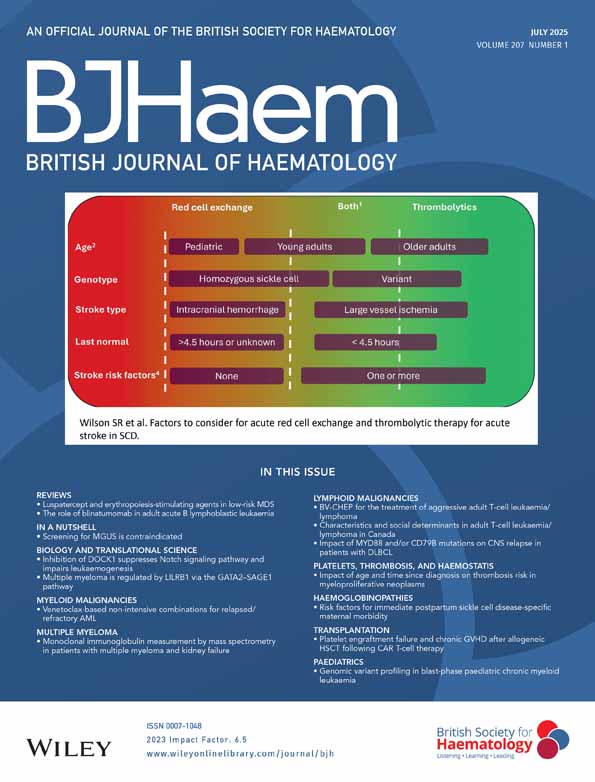In vitro T-cell receptor Vβ repertoire analysis may identify which T-cell Vβ families mediate graft-versus-leukaemia and graft-versus-host responses after human leucocyte antigen-matched sibling stem cell transplantation
Abstract
We studied oligoclonal T-cell expansions of 24 T-cell receptor (TCR) Vβ families in normal donor lymphocytes stimulated with patient's cells and in recipient blood after transplant, using a polymerase chain reaction-based assay (spectratyping). T cells from donor blood were incubated with separated myeloid leukaemia cells or T cells from the HLA-identical sibling recipient. In five of the six patients tested, the T-cell Vβ skewing pattern observed in vitro was seen in vivo after transplant. After transplant, the myeloid-specific Vβ skewing coincided with the disappearance of residual disease in three patients and in one patient skewing was lost at the time of leukaemic relapse. In functional tests, T cells generated against leukaemic cells in vitro produced interferon γ in response to the leukaemia. Removal of the leukaemia-expanded skewed Vβ families significantly decreased cytotoxic killing of the leukaemia. However, while there was a general concordance in the Vβ family exhibiting clonal expansion in vitro and in vivo, the exact clonotype expanded in vitro and in vivo differed. These findings suggest that alloresponses involve multiple T-cell clones within a restricted TCR Vβ repertoire that undergo different selection pressures in vitro and in vivo.




